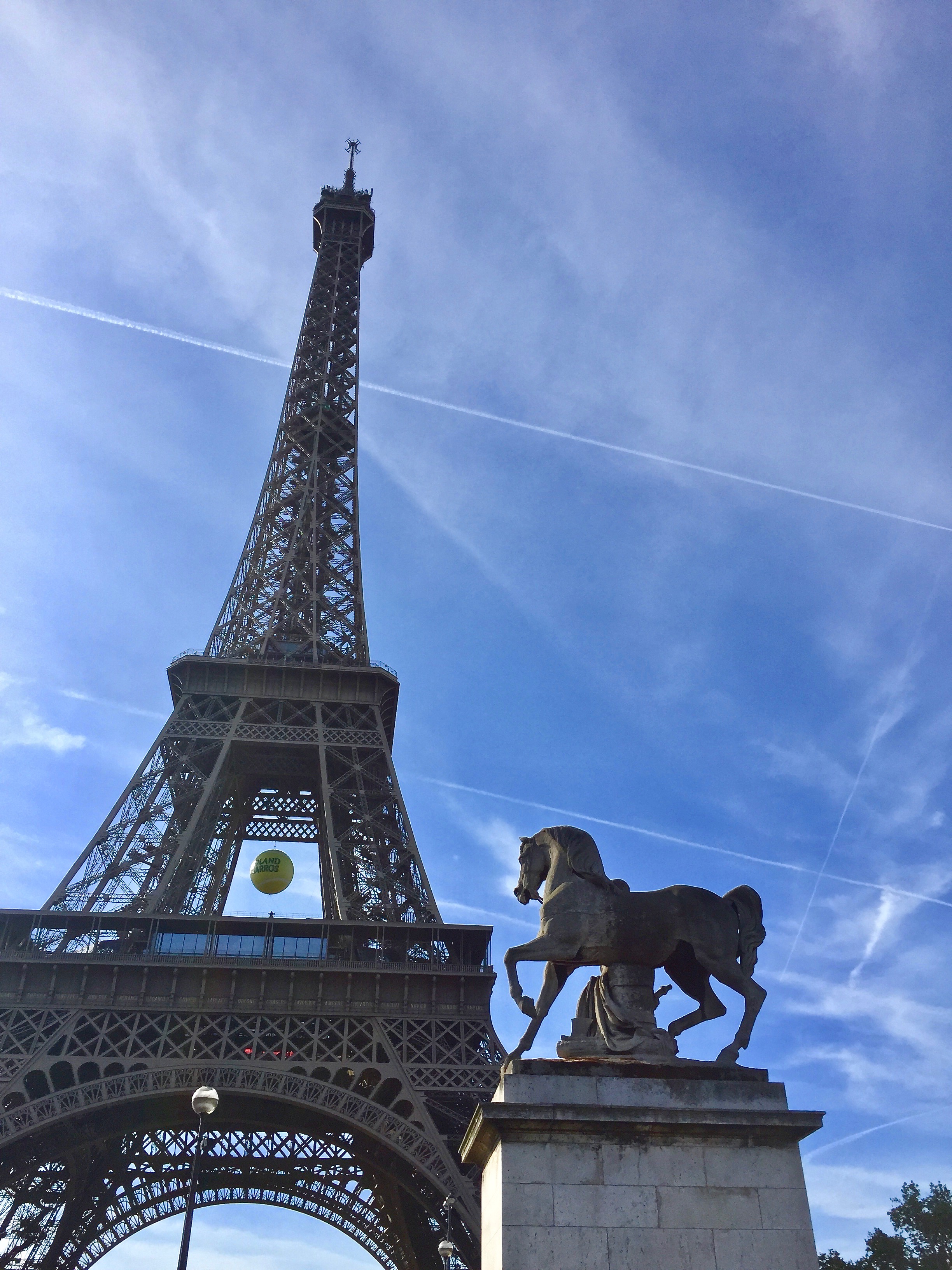
When people hear that we are leaving our home in France after eight years, one question that invariably follows is, “What will you miss most?” My answer is not what they expect to hear.
What I will miss most are Norman cows.
Specifically, those geographically situated cows that graze on the sweet green grass of Normandy and produce the most delicious and flavorful butter in the world.

“Oh, don’t worry,” people will say, “you will find other good butter wherever you live.” I don’t think so. All butters are not the same. Neither are cows.
We have traveled to both upper and lower Normandy innumerable times during the past thirteen years while living in Germany and France. My first trip to the Normandy beaches and WWII sites was when we were living in Germany. During that excursion I had a personal epiphany to learn French–to use the local language every time we traveled to this region of northern France where we fervently loved the history, the solid stone architecture, and the people.



Eventually we moved to Paris and I did learn passable French. Soon after came the discovery of how butter from Normandy transforms nondescript food, like breakfast toast or potatoes or steamed vegetables into something with incredible flavor. I fell hard for the crunch of sea salt crystals in butter-with-a-real-buttery-taste on otherwise dry or bland food. Now there is no turning back. I have been known to carry salted French butter home to Colorado, frozen, in an insulated container tucked deep inside my suitcase.

One weekend trip to lower Normandy, we stayed in an historic, privately owned château. It is also a bed and breakfast, with a fine dining room, which helps pay the taxes and upkeep on an ancient estate.
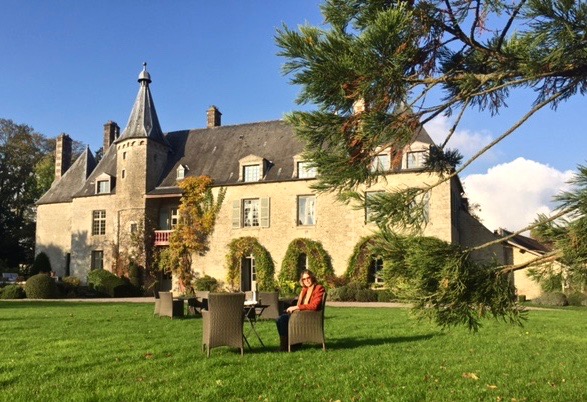
There were wineries to visit and sites to see each day, but we constantly veered off onto pot-holed, muddy, dirt roads to pay homage to cows. Just cows–grazing and standing around in fields. I wanted to study the source of my butter obsession, up close, in their natural environment.

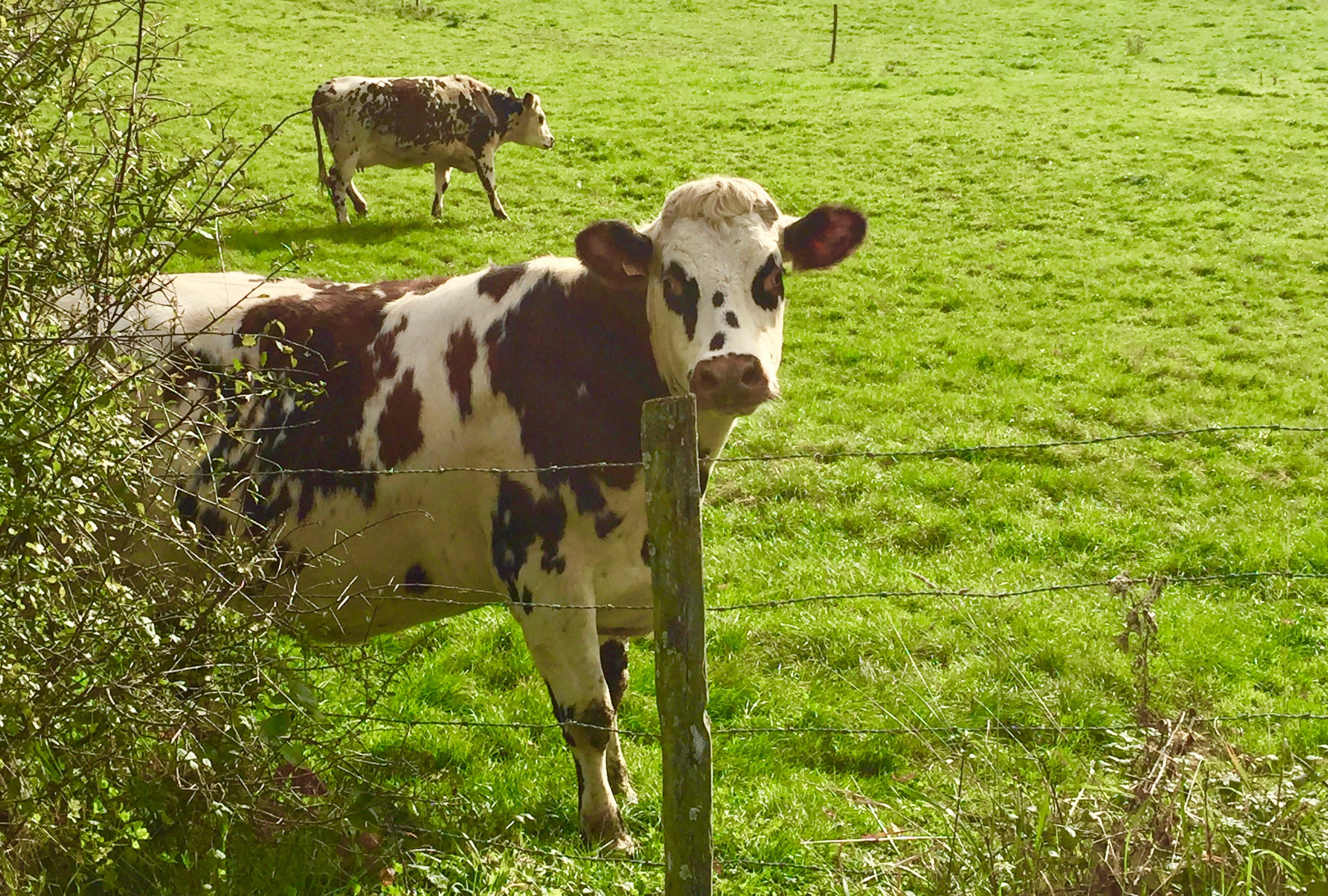
During the Germany years, we belonged to a weekend hiking club. Every Sunday morning we traipsed off, en masse, through forests, hills and vineyards into the countryside. I laughed at a friend who stopped to take photos whenever a cow was in the landscape. When I asked why, he said, “I just like them.”
Well, now I like them, too, but for a reason. They give something special back because of being these cows. Norman cows are raised only for dairy. They roam. They eat nutrient flora and grassy greens in the hills and marshlands of the rolling countryside. They produce milk that is heavy and smooth. The fatty milk cream is the color of yellow buttercup flowers. The butter from this cream is sweet and delicious.
Why is French butter so irresistibly different? Two things. One, it often has a higher fat content [87%] compared to American butter [80%]. And secondly, the real secret behind the fineness of French butter is the way it is cultured.
Cream, separated from the milk, is allowed to ferment before it is churned. Thus, bacteria forms, sugar converts to lactic acid, and the result is a distinguishably creamier, velvet-ier, butter-ier taste.
American produced butter uses only pasteurized [uncultured] milk cream. The French, dedicated to quality, refuse to bypass the fermentation step.
Before industrialization all butter was produced the French way, in small batches, using natural fermentation. As the heavier cream rose to the top of the milk, it was skimmed off and stored until there was enough to churn. That was how bacteria got in and “cultured” the cream. It resulted in a taste that was “ripe” and delicious.
When I was a child, my paternal grandmother had a milk cow on her farm. I saw how the yellow cream rose thickly to the top of a container of fresh milk after it sat awhile. She used that cream to pour into coffee or to make desserts like strawberry shortcake with garden picked berries and a dollop of fresh whipped cream.

Today, with mass production, there is no skimming by hand and waiting around for natural processes. Cream is spun out of milk via machines. However, in France, a lactic acid producing culture is added to the separated cream and fermentation still takes place. The resulting butter taste is fuller and, to some, even a “nuttier” flavor.
It is well known that the French are extraordinarily fond of butter. Culturally they take it very seriously, and it is not lightly squandered. One memorable example of this occurred during my quirky two-month job assisting a female chef with cooking classes in her Parisian apartment. I functioned as the prep and clean up person during a gap before her new student intern arrived.
One day, as she was demonstrating her no-bake-pastry-tart recipe, an entire brick of opened butter, about one pound, fell off the counter. She stepped into it with the heel of her work shoes, almost skidding to the floor, but grabbed the counter just in time. Without missing a beat, she told me to pick it up and “clean it” as it was still usable.
She carried on with class while I “cleaned” the butter with “beaucoup de paper towels” as that was the only method I could think of. [No suggestion was offered.] Only a sliver of butter remained when I thought it was “clean enough”. After sculpting it into a small ball, I set it out of sight.
During 2017 there was a lot of published hype about a calamitous butter shortage coming to France. It was and wasn’t true. Because of a shortage in raw materials, for a time, there was a supply problem in grocery stores. Concurrently, exported sales increased as the Chinese decided they loved pastries made with French butter. In America, sugar had shifted to being the dietary enemy so butter demand increased across the Atlantic. Fears of mass shortage did not transpire but my restaurant friend, Laurel Sanderson, [Treize–A Baker’s Dozen, Paris] did stockpile it for several months because she is so dependent on butter for her baked fresh daily southern biscuits, cakes, and savory tarts.
Norman cows also produce milk for Camembert–the most famous cheese of the region. The village of Camembert resides in basse [lower] Normandy. The story is that in 1791 a Norman farmer, Marie Harel, while following the recipe from a priest who hailed from Brie, made some slight changes and improved it. Camembert was born.
Camembert de Normandie is a protected designation of origin. With this stamp, it can only be made from raw, unpasteurized milk from les vaches Normandies [cows from Normandy]. It is soft, with a fine rind covered in a “white duvet”. It is at least 45% fat, with a pungent aroma and stronger taste than Brie. When warmed it becomes even creamier and can be used as a dip for raw vegetables, potatoes, or bread. I serve it this way as an appetizer or light supper. It is typically sold whole, in rounds, inside thin wooden containers made of poplar.
How to make and serve baked camembert: “Not a Station, but a Place”–Paris to Avignon
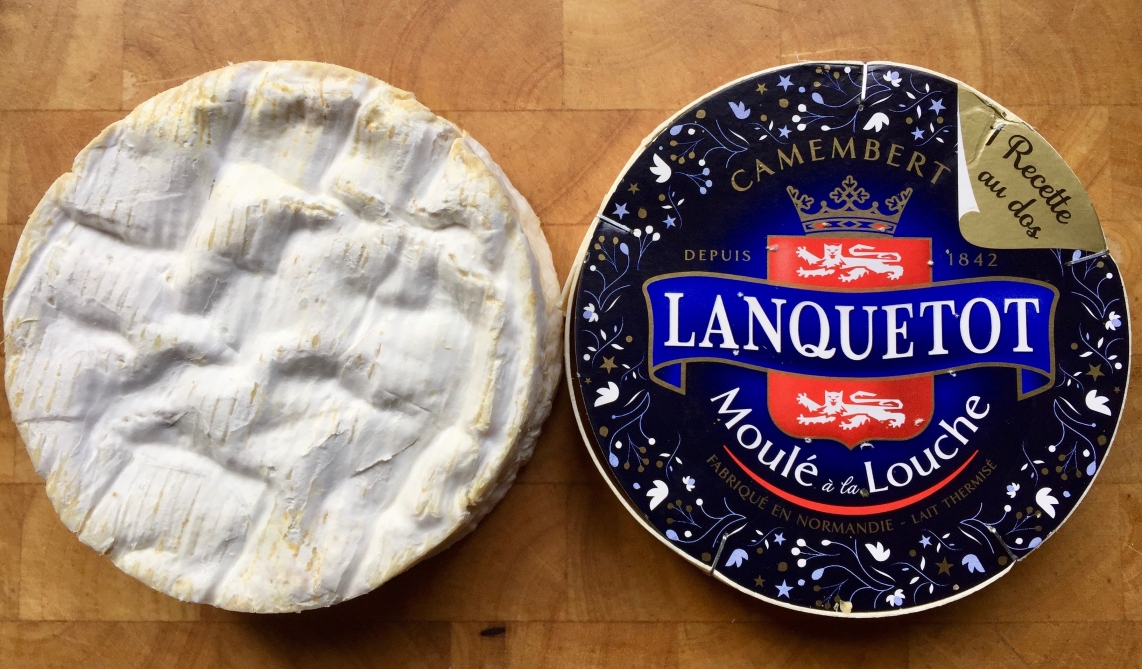
There are many things I remember after more than a decade living, learning and experiencing European life. There are adventures, travel, and friends to reminisce about, food, wine, and restaurants to recall, even faux pas to laugh or write about.
Still, at the top of my list is “mes vaches Normandies”–those fabulous “buttah-making” cows that touched my senses and tastes in a forever kind of way. I’m often thinking of the next petit dèjeuner of wholegrain toasted baguette smeared with a melting pool of butter and sea salt crystals.

Ogden Nash, the American poet of light verse wrote, “Cows are of the bovine ilk: one end is moo and the other milk.”
True. But all cows are not the same. I happen to have been seduced by the Norman ones.
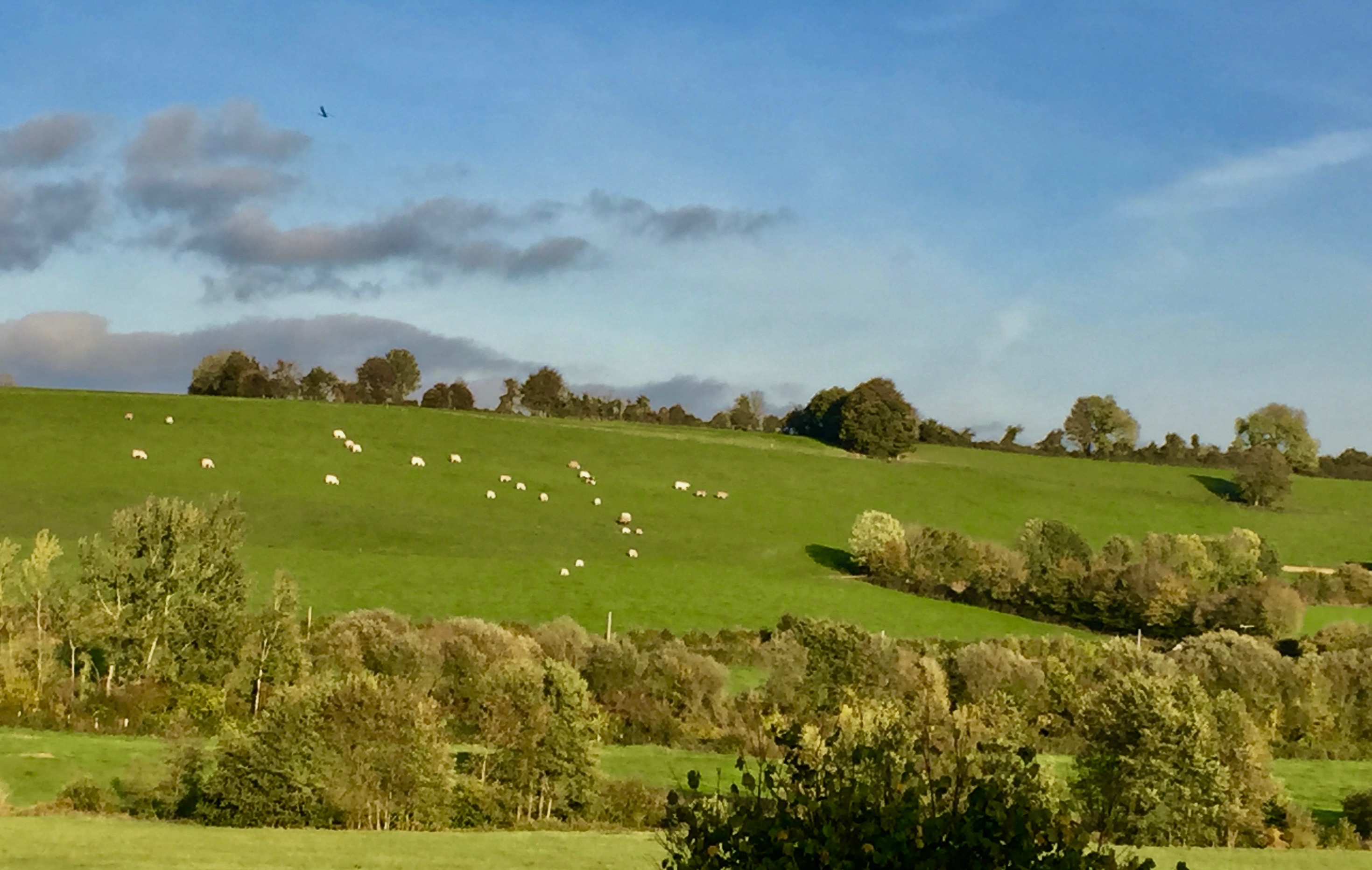



Your story makes me so hungry for French butter, bread and jam! You are a master at writing about something ordinary and making it into something extraordinary! Great blog. 💙
LikeLike
Wendy – Butter! What a wonderful way to end your Paris years. I still long for that beautiful butter here in Arizona (and a great baguette for that matter). Thank you for all of your lovely insights over the years. I am quite sure your blog will continue in amazing ways in NJ, but you will have to search for a new cow.
LikeLike
Hey, Wendy, maybe you can wrap up one of the Normandy cows and put it in your luggage to bring back to Colorado. You have space to keep one! I like the ones that are brown and white with the brown speckles.
LikeLike
Thanks for the info on butter from Normandy and why it’s so special. Very interesting! In France I had trouble deciding if I loved bread with my butter or butter with my bread.
LikeLike
Wendy – such a wonderful and unexpected farewell: butter!!!! I love it and hope you will continue your work on this blog when you move to the strange, foreign territory of New Jersey. It has been an amazing ride and it continues. We are thrilled we will be able to share more of it here stateside. All best with the upcoming move (you know how) and culture shock (harder)
Sending love and admiration!
LikeLike
Karen, yes the writing will continue post-Paris. After 31 years overseas, I still have more stories to tell…Thanks for your words.
LikeLike
Love your blog! Where will you be settling now?
LikeLike
Lord have mercy!! My mouth is watering!! Don’t come to Beirut without it!!! It sounds like a game changer to me!
LikeLike
On its’ way very soon…
LikeLike
Those cows are gorgeous. What a unique perspective on beauty. Will you continue to blog once you are back in the U.S.? We can use a different eye to find some beauty in this political climate.
LikeLike
Story telling is my thing. When another rises to the surface, it will be told. Wherever we live. Next stop–Princeton.
LikeLike
Another very enjoyable read!
So you’re leaving Paris? Where next?
LikeLike
Had to send this to my granddaughters, Wendy. I’m in France (one month immersion program at Institut de Francais in Villefranche-sur-Mer!). What do they want me to bring back? A beautiful summer dress? A scarf? Perfume? Mais non, Sea Salt Butter! Always. And for the few weeks after we use it so carefully and lovingly, murmuring and yumming as we savor each bite! I want to come back as a Normandy cow just like your beautiful pictures.
LikeLike
Your granddaughters are lucky girls to have learned a few of the finer things about food during their year in Paris. L’Institut de Français in Villefranche is the best language immersion school. I went twice–for debutant and intermediate levels two years apart. Not that I ever became fluent, but it set strong foundations from which to build daily usage and practice.
LikeLike